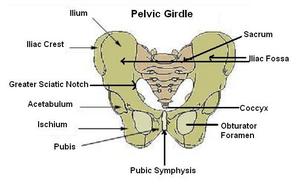Loofah is known for its cleansing properties and is grown all around the world in warm climates, but did you know that when the loofah is picked from the vine before it matures it can be eaten? While some loofahs are better than others to eat, the ridged or angled loofah is the most widely preferred for food.
Ridged Loofah a Weird Food
This vegetable comes from a fast growing vine with five-lobed heart shaped leaves. The vines can reach up to 15 feet in length and it’s best to let it grow up a strong trellis. Since the vine is sensitive to frost it needs to be planted after the threat of the last spring frost has passed or plant indoors a few weeks prior.
This may sound like a weird food to eat, but when harvested at the proper time and cooked or pickled correctly it is satisfying and nutritious. Once the loofah begins to grow, keep a close eye on it each day. You do not want to let the ridges begin to form on the outside and begin to harden. It will be too mature to eat when the ridges are prominent and the inner fibers begin to form.
If you have waited too long, let the loofah continue to grow and harvest when the fibers are completely formed and use it as a bath loofah. Leave on the vine until the first frost or until the outer skin is nice and firm. The inside will seem more hallow than when it is young and full of moisture. Once dry, peel off the outer skin, shake to remove the seeds, and tie a string through one end. My kids love to shake out the seeds, but I tend to find them all over the house for weeks.
Preparing Loofah or Luffa Gourd for Cooking
The young ridged loofah is a good source of iron, phosphorus, and calcium. The young loofahs can be eaten raw, pickled, fried, boiled, stir-fried, or used for sauces, soups, and stews. Sometimes, people will use the flower buds and young leaves as leafy vegetables in salads. I have never eaten the young leaves, but many love them. Try eating loofah with different combinations of vegetables including: zucchini, peppers, chilies, cucumbers, carrots, peas, and so on.
Commonly referred to as being similar to a cucumber or zucchini, the ridged loofah can be sliced and fried much the same way as you would a zucchini. Wash the loofah, peel off the ridges, slice it up, and coat with seasoned flour. Fry in a pan coated with non-stick cooking spray. Cover the pan and turn on medium heat. This is much healthier than deep frying in a pan of oil. The lid will help keep the moisture in and make it taste delicious. Be sure to turn the slices over during cooking to keep them from burning. The loofah can sometimes have a sweeter taste after it is cooked making it great for soups and stews, too.
A great way to cook the loofah is to stir-fry it. This is the way to go if you have never tasted loofah before or if you want a quick side dish. Begin by cutting the loofah in small strips. Then, add a few teaspoons of peanut or canola oil to a pan. Turn heat to medium-high or high heat and let the pan or wok become hot. Add a couple of diced cloves of garlic, stir, then add loofah and one tablespoon of water. Cook about a minute and a half. Remove from pan. Add salt and pepper. Serve.
Loofah Folklore
In different parts of the world the loofah is believed to do many miraculous things. For instance, the roots are used as a laxative and to treat dropsy in India. They also treat jaundice with the fruit juice and leaves. Some of the people of West Africa use the juice from the leaves as a conjunctivitis eye wash while others use it for skin sores and animal bites.
Sources:
“Angled Loofah”, Web India123.com
“Patola”, Stuart Xchange.org
“Luffa Info”, Luffa.Info


